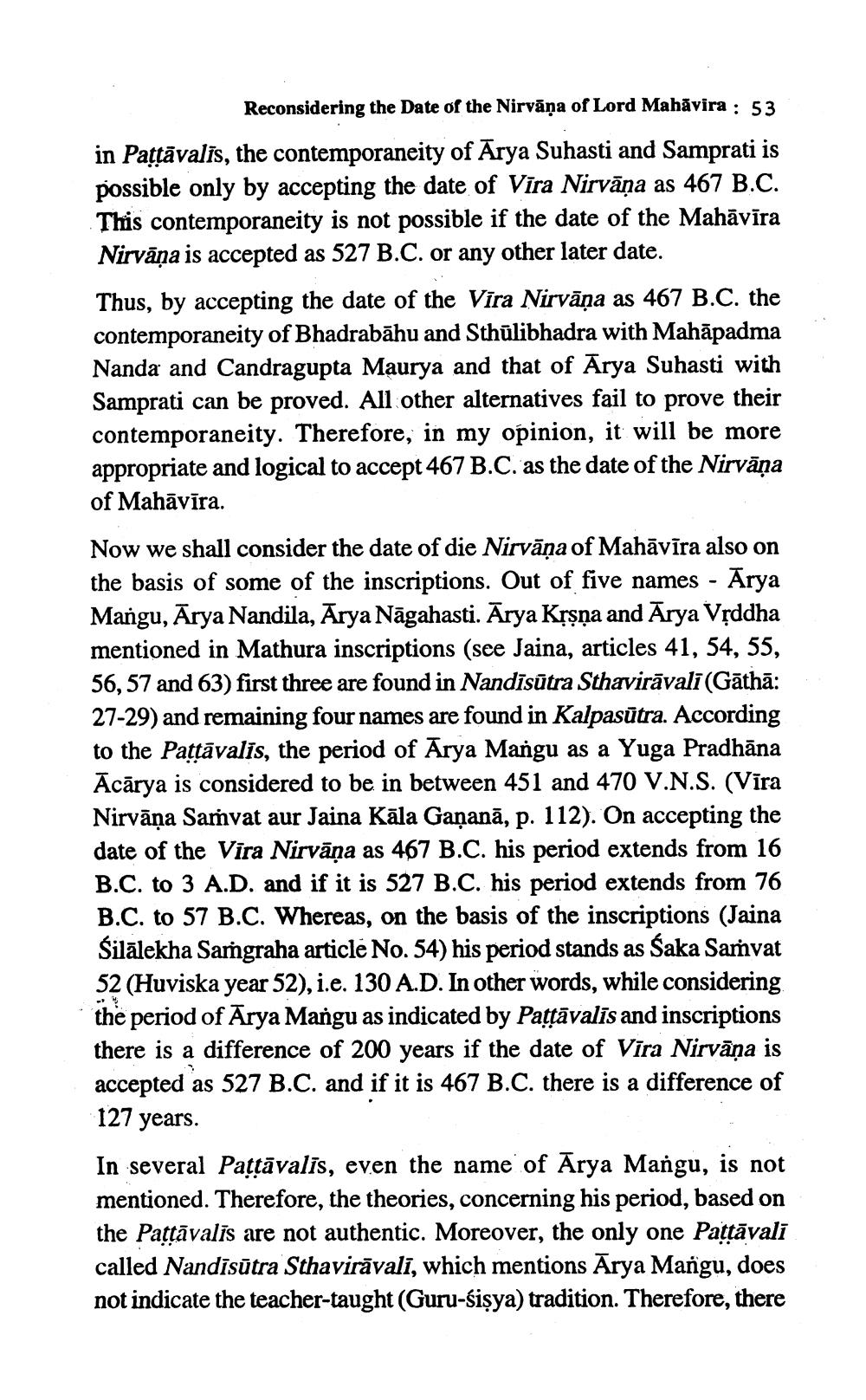________________
Reconsidering the Date of the Nirvāņa of Lord Mahāvira : 53 in Pattāvalīs, the contemporaneity of Arya Suhasti and Samprati is possible only by accepting the date of Vīra Nirvāṇa as 467 B.C. This contemporaneity is not possible if the date of the Mahāvīra Nirvāṇa is accepted as 527 B.C. or any other later date. Thus, by accepting the date of the Vīra Nirvāṇa as 467 B.C. the contemporaneity of Bhadrabāhu and Sthūlibhadra with Mahāpadma Nanda and Candragupta Maurya and that of Arya Suhasti with Samprati can be proved. All other alternatives fail to prove their contemporaneity. Therefore, in my opinion, it will be more appropriate and logical to accept 467 B.C. as the date of the Nirvāņa of Mahāvīra.
Now we shall consider the date of die Nirvāņa of Mahāvīra also on the basis of some of the inscriptions. Out of five names - Arya Mangu, Ārya Nandila, Arya Nāgahasti. Ārya Krşņa and Arya Vțddha mentioned in Mathura inscriptions (see Jaina, articles 41, 54, 55, 56,57 and 63) first three are found in Nandīsūtra Sthavirāvalī(Gāthā: 27-29) and remaining four names are found in Kalpasūtra. According to the Pattāvalis, the period of Arya Mangu as a Yuga Pradhāna Ācārya is considered to be in between 451 and 470 V.N.S. (Vīra Nirvāņa Saṁvat aur Jaina Kāla Gañanā, p. 112). On accepting the date of the Vīra Nirvāṇa as 467 B.C. his period extends from 16 B.C. to 3 A.D. and if it is 527 B.C. his period extends from 76 B.C. to 57 B.C. Whereas, on the basis of the inscriptions (Jaina Śilālekha Sargraha article No. 54) his period stands as Saka Samvat 52 (Huviska year 52), i.e. 130 A.D. In other words, while considering the period of Arya Mangu as indicated by Patļāvalīs and inscriptions there is a difference of 200 years if the date of Vīra Nirvāṇa is accepted as 527 B.C. and if it is 467 B.C. there is a difference of 127 years. In several Patřāvalis, even the name of Arya Mangu, is not mentioned. Therefore, the theories, concerning his period, based on the Pattāvalīs are not authentic. Moreover, the only one Pattāvali called Nandisūtra Sthavirāvali, which mentions Ārya Mañgu, does not indicate the teacher-taught (Guru-śișya) tradition. Therefore, there




